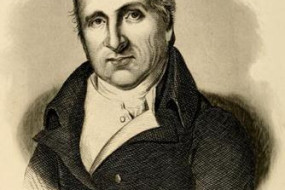On 30 June 1827, the nephew of a landlord was shot dead in Rathcannon, County Tipperary. Twenty-five-year-old Richard Chadwick was a magistrate and a land agent for his uncle, and had evicted a number of tenants in the Rathcannon area. He had also started building a police barracks in Rathcannon, an
Our Legal Heritage
On 25 October 1920, Terence MacSwiney died in London’s Brixton Prison after 74 days on hunger strike. MacSwiney was a republican poet and a playwright who was elected as MP for Mid-Cork in the 1918 general election, and one of the many TDs marked as ‘fé ghlas ag Gallaibh’ (i
Richard Pigott was a journalist who worked with several nationalist newspapers across the island of Ireland, including the Ulsterman and the Nation. For most of his life, Pigott appeared to support the Fenian movement and had been imprisoned for seditious libels on the government during his career.
The Garda Síochána Act 1958 provided for the admission of women to membership of An Garda Síochána, and this month marks the 60th anniversary of women joining An Garda Síochána. However, the 12 Ban Ghardaí appointed on 10 July 1959 were not the first
During World War II, Ireland’s official policy was one of neutrality. Under international law, the state was required to arrest and intern belligerents who landed here by accident – or in some cases were rescued by Irish ships. A total of 314 belligerent personnel were interned at the Cu
Badge of the Royal Irish Constabulary On the 29th of June 1871, Royal Irish Constabulary inspector Thomas Hartley Montgomery robbed the Northern Banking Company in Newtownstewart, County Tyrone and murdered cashier William Glass.
Sir Cusack Patrick Roney, Illustration of the "Long Hole" on Ireland's Eye, where Sarah Kirwan's body was found On the 6th of September 1852, William Bourke Kirwan took a boat to Ireland’s Eye, an island off the coast of Dublin, with his wife of twelve years, Sara Maria Louisa K
On 15 August 1857, Maria Theresa Longworth and Major William Charles Yelverton got married in a Catholic Church near Rostrevor. They had previously married in Edinburgh on or about 13 April 1857 according to Scottish law; however, Theresa refused to cohabit with Major Yelverton until they were marri
On 9 June 1976, Marie and Noel Murray were convicted of capital murder and sentenced to death. In September 1975, Garda Michael Reynolds was fatally shot in the head while chasing two men and a woman who had robbed the Bank of Ireland in Killester at gunpoint. The Murrays were arrested and charged w
In 1830, Sir Jonah Barrington became the only High Court judge to be dismissed from office by the House of Commons and the House of Lords. Jonah Barrington was a lawyer, judge and politician born at Knaptou, near Abbeyleix. The fourth child of impoverished landowner John Barrington, he was immediate
John Toler, the first Earl of Norbury, earned his reputation as “the hanging judge” during his time as a particularly callous judge in Ireland in the late 18th and early 19th century. In a somewhat contradictory trait, Toler is often described as having those in his courtroom – inc
The Scold’s Bridle or Branks was a form of punishment usually reserved for women who resisted subordination and didn’t conform to being a quiet and virtuous wife. Women who were perceived as being troublesome – who gossiped, “nagged” their husbands, or who were acc
Our sister publication, Scottish Legal News, recalls a scandalous divorce case from just across the water. Donald Findlay QC has narrated an audiobook on the divorce case of the Duchess of Argyll – Allan Nicol’s Three Strand Pearl Necklace.
On 22 April 1983, Senator David Norris lost an appeal to the Supreme Court. He sought a declaration that that sections 61 and 62 of the Offences Against the Person Act 1861, and section 11 of the Criminal Law Amendment Act 1885, were inconsistent with the Constitution. Under Article 50 of the Consti
Alice Milligan was born in a village just outside Omagh in September 1866, one of thirteen children. Her parents were Methodists of modest means, and whose success in the Irish linen trade brought the family to Belfast in 1879. In Belfast, Alice was educated at Methodist College along with her survi





















